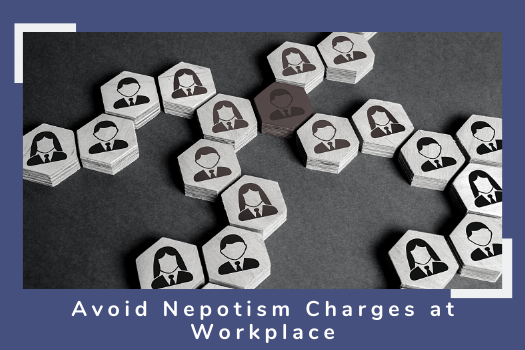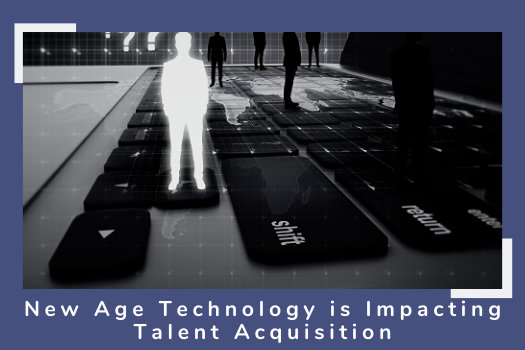Culture shows up as the output of how the organization thinks, reacts, communicates, collaborates, and makes decisions.
Vivek is a Global Talent Director for AP Moller Maersk. In his over 17 years of career, he has worked in varied HR leadership roles as an HR Business Partner as well as Head of Talent Management and Talent Acquisition in multi-national companies such as GE, Dr. Reddys, and Larsen & Toubro.
Thank you, Vivek, for agreeing to do this interview with us. Kindly be as candid as you can.Lets Start!!!
How does the pandemic year affect you? What changes, professional and personal, does it bring into your life?
2020 has been a challenging year for everyone including me and my family at the very least. Putting it into perspective, at a macro level, it has accelerated some of the fundamental changes some of us have been keenly anticipating. The inevitability of change has never been so stark for naysayers in recent times. The fine demarcation between personal space and professional space, which has been on a downward trajectory for quite some time, has suddenly evaporated. Meetings interrupted by a peekaboo from my kid are no longer considered taboo nor is the ubiquitous traffic snarl an acceptable reason for my missed deadline. Conversations around acceptable office attire and timings have now moved into acceptable intrusions into home privacy and its impact on mental health. The ability to multi-task is no longer about handling multiple office projects but about delivering a presentation, while ensuring my 6-year-old is connected to her classes from home. Executive presence and influencing which were top-of-mind development needs have suddenly been replaced by conversations around effective online presence, chat room etiquettes and nuances around electronic gadgetry.
While the pandemic has demonstrated that no one is impervious to changes, it also highlights the asymmetric impact a crisis has due to the prevailing societal inequality. The impact has been predicated on the nature of our role, industry, or the overall social, economic and political fabric we are part of. Mental health and the importance of human connections have never been felt more acutely. I am fortunate to have been part of Maersk and its enabling eco-system while dealing with this pandemic. This minimized the overall impact for me both professionally and personally.
In the new normal, some employees will be mandatorily working from the company premises, some will be allowed to permanently work-from-home, and others will be following a hybrid schedule. How do you foresee the future workplace? How will companies ensure employee engagement? What will be the prominent elements of NEW work culture?
The concept of a heterogeneous workforce has been in the work for quite some time. Though this theoretically improves productivity and engagement, we never saw a full-fledged adoption at least not on the scale of what we saw in 2020. There was no wide-spread proof of concept on the efficacy across roles. This pandemic gave us an opportunity to test out a multitude of roles across borders, cultures, and time zones. On average, the outcome has been widely positive both for us and for the employees. As with any massive customer adoptions, crossing the chasm brings new challenges. Stronger support infrastructure, alternate means of social interactions, protection of personal space, and the impact on mental health are some of the important dimensions we are continuously exploring to make this change more permanent. In my view, organizations and employees have both seen the benefits of this change, and this will herald a more permanent change in the way people work and are expected to work across the globe and across roles. An offshoot of this change for leaders will be to seek ways to continue engaging their team. Last year despite the pandemic and the remote working condition we improved our employee engagement scores twice over the last 12 months. These commendable efforts will need to be continuously augmented by searching for alternate ways to capture the evolving needs of home-based and hybrid employees. This will herald stronger diversity & inclusion in the workplace.
The new normal requires a new definition for work-life-balance. In your role, do you think work-from-home is a boon or a bane? What challenges, if any, did you face in maintaining a work-life balance? What will be the new definition of work-life-balance?
Depending on their base location, people on average waste an hour every day in office commute. Growing urbanization will continue to outpace infrastructure growth making these numbers worse in the short to medium term. Ironically in megacities, decreased productivity with escalating office/home costs creates a double whammy. It is a major irritant for both policymakers as well as for society in general. A solution in the short term which is already being successfully piloted in pockets has been hot desking augmented by remote work. The new normal of 2020, has demonstrated the benefits of expanding this concept across roles and across sectors, surpassing the wildest experiments envisioned by policymakers in the past. The benefits as evidenced are strong and early adopters have announced permanent work from home programs beyond the pandemic, which is a positive offshoot of this pandemic.
As with any change, there are bound to be challenging: Some are transient while others are more permanent calling for novel solutions. In 2020 my bedroom doubled down as an office space, intruding into the privacy of our family members while collapsing the boundaries between office and home. Lack of appropriate infrastructure or support systems at home to manage this new normal will have a profound impact on how we successfully manage this transition. I struggled the initial few months, just getting this aspect right. Zoom fatigue is a new term in our lexicon not just in the corporate sector but also for our kids. Just the inability to take some time off with our friends to recharge or share a joke over an office break to unwind are new challenges that we have never experienced in the past. Last year as a company we have put in extra efforts to streamline awareness and focus on the mental well-being of our employees while navigating this unique challenge. The concept of work-life balance has completely flipped. From a traditional seesaw between time spent in the office Vs home, my kids have switched to comparisons between my uptime on devices Vs downtime with them. The change is subtle but profound. Time spent at the office is no longer an apt measure of productivity nor is time spent at home a measure of rejuvenation. Work-life balance is moving away from measuring the quantity of time spent to the quality of time spent.
Post-Pandemic, in the new normal, what will be the critical expectations of CEOs from their HR Leaders?
HR has had a ringside view of the massive workplace transition in 2020. From enabling employees to coaching leaders, HR helped mitigate some of the business risks and ensured continuity. The new normal will call for some critical and permanent changes in the way HR services are delivered to employees. Technology and selfservice will become even more crucial for us in delivering a seamless and consistent employee experience. Some organizations such as Maersk were already in transit for these changes. This pandemic will serve as an accelerant making change faster and more widely dispersed. Employee productivity, engagement, and retention will call for a revamped approach. A subtle but crucial leadership ask from HR would be to enable a successful cultural transition in the new normal with a much stronger push for employee diversity especially at leadership levels.
As an HR Leader, how will you prepare future leaders to manage crises of the magnitude of Covid-19? What NEW LEADERSHIP COMPETENCIES will become necessary for the success of a leader?
To survive a crisis having enough financial wherewithal is a given. COVID has starkly brought into focus how HR and Technology is the other two pillars of a three-legged stool on which a strong organization is built. Organizations that were at the forefront of leading Technology and HR practices have weathered this crisis better than others. To ensure business continuity, a seamless technology backbone was critical. Our investments in technology as part of our business transformation made us better positioned to manage this transition. Next came the leadership challenge of engaging and inspiring a remote workforce to exceed customer expectations. Companies that came up trumps at managing this are the ones who have invested in creating a growth mindset amongst their leaders. Leadership during crisis calls for an innate ability to inspire your workforce. Leaders who differentiated themselves in this crisis exhibited enormous self awareness to pivot and look for alternate ways to succeed. This crisis was not the first nor will it be the last. Employees and leaders who survive this crisis as well as future ones will exhibit high learning agility to adapt and grow. Others will gradually wither away.
In your role as a Talent Development Leader, how are you ensuring collaboration and accountability among virtual teams?
2020 has been a truly phenomenal year for us, both in terms of our employee resilience as well as our business results. This was possible due to the transformational journey we have been on for the last few years even before the pandemic hit. COVID reinforced our strategic direction. Igniting a culture of growth mindset through an inclusive talent development & performance management framework has been at the heart of our HR transformation. This will have a profound impact not just on talent but on the business. In this ever-evolving context, our revamped framework will empower the front-line leaders to drive collaboration and accountability in ways never seen before, which we hope will drive stronger employee engagement & growth. The strategic investments we have been making in our people and technology will go a long way in ensuring that our organization is not only well-positioned for the present but also for the future.
TRUST plays an important role in the success of a team, more so in a virtual environment (work-from-home). In your experiences, what Team Leaders are doing differently to develop and sustain trust among team-players? How is technology helping in sustaining the trust?
Trust is the bedrock of empowerment. Trust and empowerment eventually lead to the creation of a self-fulfilling prophecy. The starting point we see in our successful leaders today is the ones fearlessly leveraging empowerment and technology to unleash human capital. New age leaders have shed the command-and-control style to imbibe servant leadership. They acknowledge that they do not have all the answers and unleashing team potential is pivotal to their success. This strengthens trust within the team and is a great step forward to strengthen engagement without using the crutches of the traditional maker-checker model.
Lastly, what do you see HR Leaders doing 10-years hence? How will their role transform? What will they START Doing, STOP Doing, and CONTINUE doing?
Remote working, flexible workforce, employee experience, and dynamic re-skilling are some of the critical macro trends visible on the horizon today. This may well change over the medium term but building a resilient workforce, creating a diverse leadership bench strength, and re-defining the employee value proposition has evolved into central organizational themes. In this context, HR Leaders will need to augment their positioning from being perceived as functional experts into business leaders specialized in human resources. From being custodians of org processes and policies, they will have to don the mantle of transformational leaders who will continue to be organizational stewards and curators of an enabling culture.






